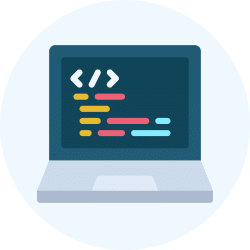Introduction to Trie | DSA in C++ - Software Development PDF Download
| Table of contents |

|
| Introduction |

|
| What is a Trie? |

|
| Key Features of Tries |

|
| Trie Implementation in C++: |

|
| Sample Problems |

|
Introduction
- Tries, also known as prefix trees, are tree-based data structures commonly used for efficient string operations.
- Tries offer fast insertion, deletion, and search operations for strings, making them a valuable tool in various applications, including text processing, spell checking, and autocomplete.
What is a Trie?
- A Trie is a tree-like data structure where each node represents a character or a partial string.
- The root of the Trie represents an empty string, and each path from the root to a leaf node represents a complete string.
- Unlike binary search trees or hash tables, Tries store information in a tree structure, making them well-suited for handling strings efficiently.
Key Features of Tries
- Fast Lookup: Tries provide efficient search operations for strings, typically with a time complexity of O(M), where M is the length of the search string.
- Prefix Matching: Tries excel at finding strings with a common prefix, making them ideal for autocompletion or spell checking.
- Space Efficiency: While Tries offer fast operations, they may consume more memory compared to other data structures.
- Easy String Operations: Tries simplify various string operations like insertion, deletion, and traversal.
Trie Implementation in C++:
- Let's understand how to implement a Trie data structure in C++ using classes and pointers.
- We'll start by defining the TrieNode class and its essential functions.
Code Example 1: TrieNode Class Implementation
class TrieNode {
public:
bool isEndOfWord;
TrieNode* children[26]; // Assuming only lowercase alphabets
TrieNode() {
isEndOfWord = false;
for (int i = 0; i < 26; i++) {
children[i] = nullptr;
}
}
};
Explanation:
- The 'TrieNode' class represents a single node in the Trie.
- It consists of a boolean flag 'isEndOfWord' to mark the end of a word and an array 'children' to store references to child nodes for each lowercase alphabet.
- In the constructor, 'isEndOfWord' is set to 'false', and the 'children' array is initialized with 'nullptr' values.
Code Example 2: Trie Class Implementation
class Trie {
TrieNode* root;
public:
Trie() {
root = new TrieNode();
}
void insert(const string& word) {
TrieNode* curr = root;
for (char c : word) {
int index = c - 'a';
if (curr->children[index] == nullptr) {
curr->children[index] = new TrieNode();
}
curr = curr->children[index];
}
curr->isEndOfWord = true;
}
bool search(const string& word) {
TrieNode* curr = root;
for (char c : word) {
int index = c - 'a';
if (curr->children[index] == nullptr) {
return false;
}
curr = curr->children[index];
}
return curr->isEndOfWord;
}
};
Explanation:
- The 'Trie' class represents the Trie data structure.
- It includes a pointer 'root' to the root node of the Trie.
- The constructor initializes the Trie by creating a new root node.
- The 'insert' function inserts a word into the Trie by traversing the Trie and creating new nodes as needed.
- The 'search' function checks if a given word exists in the Trie by traversing the Trie and returning 'true' if the word is found and the corresponding 'isEndOfWord' flag is set.
Sample Usage:
Trie trie;
// Inserting words into the Trie
trie.insert("apple");
trie.insert("banana");
trie.insert("orange");
// Searching for words in the Trie
cout << trie.search("apple") << endl; // Output: 1 (true)
cout << trie.search("banana") << endl; // Output: 1 (true)
cout << trie.search("grape") << endl; // Output: 0 (false)
Explanation:
In the sample usage, we create a Trie object and insert three words: "apple," "banana," and "orange."
We then perform search operations to check if specific words exist in the Trie using the 'search' function.
Sample Problems
Problem 1: Implement a function to count the number of words starting with a given prefix in a given Trie.
- Input: Trie and a prefix string
- Output: Count of words starting with the given prefix
Problem 2: Given a list of words, find the longest common prefix among them.
- Input: List of words
- Output: Longest common prefix
Problem 3: Implement a function to remove a word from a Trie.
- Input: Trie and a word to be removed
- Output: Updated Trie without the specified word
Note: For the solutions to the sample problems, refer to the accompanying code samples and explanations.
By following the concepts and examples presented in this article, you can gain a solid understanding of Tries and their implementation in C++.
Conclusion
- Tries are powerful data structures for handling strings efficiently, providing fast search and string operation capabilities.
- By implementing Tries in C++, you can leverage their benefits in various applications that involve extensive string processing.
|
152 videos|115 docs|24 tests
|














